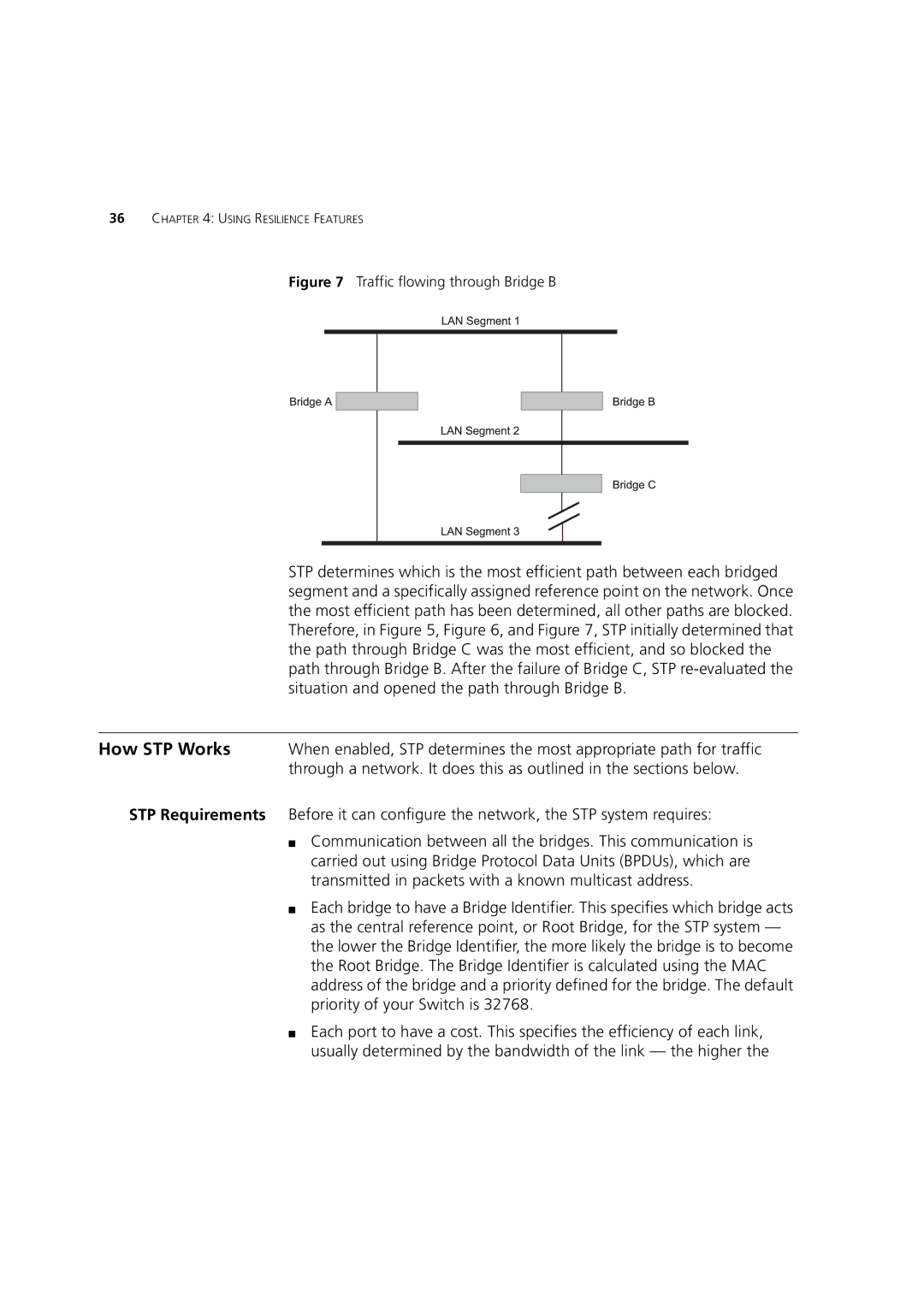
36CHAPTER 4: USING RESILIENCE FEATURES
Figure 7 Traffic flowing through Bridge B
STP determines which is the most efficient path between each bridged segment and a specifically assigned reference point on the network. Once the most efficient path has been determined, all other paths are blocked. Therefore, in Figure 5, Figure 6, and Figure 7, STP initially determined that the path through Bridge C was the most efficient, and so blocked the path through Bridge B. After the failure of Bridge C, STP
How STP Works When enabled, STP determines the most appropriate path for traffic through a network. It does this as outlined in the sections below.
STP Requirements Before it can configure the network, the STP system requires:
■Communication between all the bridges. This communication is carried out using Bridge Protocol Data Units (BPDUs), which are transmitted in packets with a known multicast address.
■Each bridge to have a Bridge Identifier. This specifies which bridge acts as the central reference point, or Root Bridge, for the STP system — the lower the Bridge Identifier, the more likely the bridge is to become the Root Bridge. The Bridge Identifier is calculated using the MAC address of the bridge and a priority defined for the bridge. The default priority of your Switch is 32768.
■Each port to have a cost. This specifies the efficiency of each link, usually determined by the bandwidth of the link — the higher the
